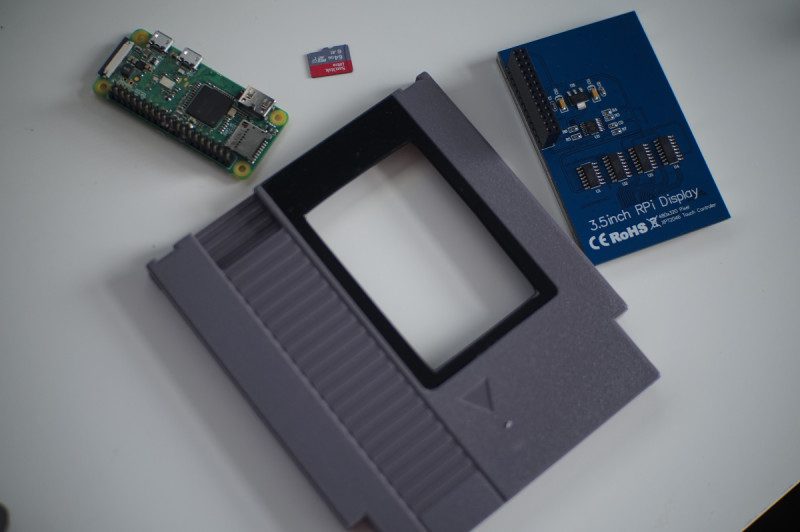Today, pixel art invokes pangs of nostalgia and it has evolved into a much-loved digital aesthetic in its own right. Ashley Green is certainly a huge fan, which is why he sought a quirky way of displaying his favourite pixel art, hitting on an idea that also paid homage to the past.
“I’m the proud owner of a few Raspberry Pi computers and I’m always looking for new and interesting ways of using them, with retro gaming being the main driver,” he says. “Having previously used Raspberry Pi 3 in a mini-replica NES case, I always thought something was missing: the classic NES cartridge itself. There’s something extremely satisfying about handling physical media that you don’t quite get with emulation.”
Playing with power
Rather than amass a large collection of cartridges – “I didn’t want to break the bank or shelves with stacks of old games” – Ashley felt that a single cart could be used to showcase the style of art he loves.
Inspired by a project that turned an NES case into a full handheld system complete with screen and controller, he decided to turn a cartridge into an art frame which could then be placed in his study as a constant reminder of the past.
“I thought it would allow me to appreciate the time and effort that went into the artwork and give me a little preview of classic NES games,” he reveals.
Let’s-a-go!
Grabbing a Raspberry Pi Zero W and a 3.5-inch screen that he was using for another project, he got to work. “Not wanting to destroy an original cart, I searched online and found a new blank cartridge shell. All I then needed was the USB and HDMI cables as well as a slim battery pack.”
Since the screen is placed in the area usually reserved for the cartridge label, the build required some cutting into the plastic. Most of the project, however, involved setting up the software, with Ashley using the cloud-based digital signage app Yodeck. This allowed him to create, schedule, and upload videos and images from his computer or smartphone, although he says OXMPlayer would work well for offline creations.
“I found the best process was to upload media and create a playlist that I could place on a layout that suited the screen,” he says. “I’ve chosen to use mine to show a mix of artwork, game footage and classic NES commercials, but I’ve also used it to show off an action RPG called Induction Quest, which I created in Unity. It certainly makes for a great conversation piece – I’ve had a few people ask me what it is during my work video calls.”




